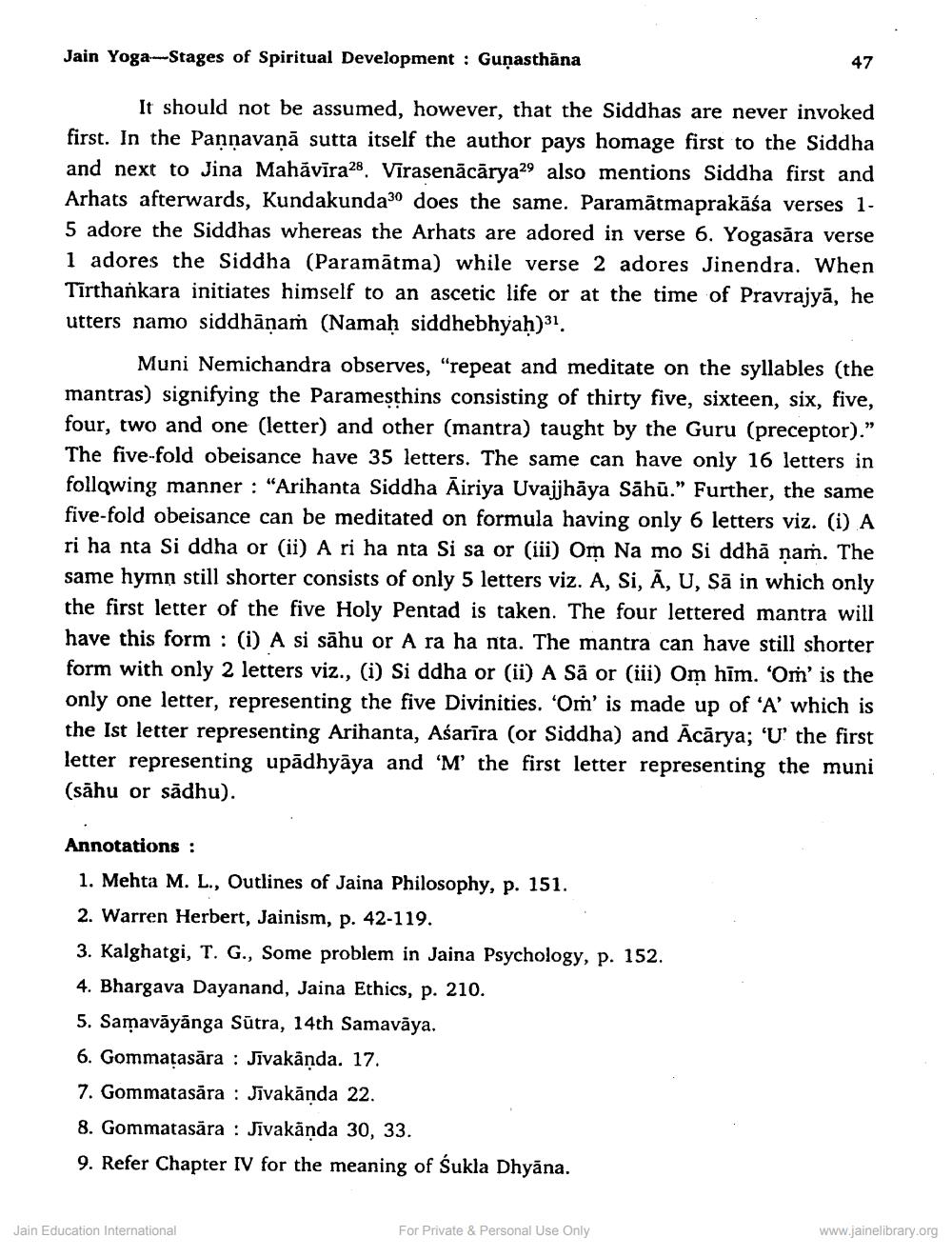________________
Jain Yoga-Stages of Spiritual Development : Gunasthāna
47
It should not be assumed, however, that the Siddhas are never invoked first. In the Pannavanā sutta itself the author pays homage first to the Siddha and next to Jina Mahāvīra28 Virasenācārya29 also mentions Siddha first and Arhats afterwards, Kundakunda30 does the same. Paramātmaprakāśa verses 1. 5 adore the Siddhas whereas the Arhats are adored in verse 6. Yogasăra verse 1 adores the Siddha (Paramātma) while verse 2 adores Jinendra. When Tīrthankara initiates himself to an ascetic life or at the time of Pravrajyā, he utters namo siddhānam (Namaḥ siddhebhyah)31
Muni Nemichandra observes, “repeat and meditate on the syllables (the mantras) signifying the Parameșthins consisting of thirty five, sixteen, six, five, four, two and one (letter) and other (mantra) taught by the Guru (preceptor).” The five-fold obeisance have 35 letters. The same can have only 16 letters in following manner : “Arihanta Siddha Airiya Uvajjhāya Sähū.” Further, the same five-fold obeisance can be meditated on formula having only 6 letters viz. (i) A ri ha nta Si ddha or (ii) A ri ha nta Si sa or (iii) Om Na mo Si ddhā ņam. The same hymn still shorter consists of only 5 letters viz. A, Si, Ā, U, Sā in which only the first letter of the five Holy Pentad is taken. The four lettered mantra will have this form : (i) A si sāhu or A ra ha nta. The mantra can have still shorter form with only 2 letters viz., (i) Si ddha or (ii) A Så or (iii) Om him. 'Om' is the only one letter, representing the five Divinities. 'Om' is made up of 'A' which is the Ist letter representing Arihanta, Aśarīra (or Siddha) and Acārya; 'U' the first letter representing upādhyāya and 'M' the first letter representing the muni (sāhu or sādhu).
Annotations :
1. Mehta M. L., Outlines of Jaina Philosophy, p. 151. 2. Warren Herbert, Jainism, p. 42-119. 3. Kalghatgi, T. G., Some problem in Jaina Psychology, p. 152. 4. Bhargava Dayanand, Jaina Ethics, p. 210. 5. Samavāyānga Sūtra, 14th Samavāya. 6. Gommațasāra : Jivakāņda. 17. 7. Gommatasāra : Jīvakānda 22. 8. Gommatasära : Jivakända 30, 33. 9. Refer Chapter IV for the meaning of Sukla Dhyāna.
Jain Education International
For Private & Personal Use Only
www.jainelibrary.org




